Building a To-Do List with Workers and KV
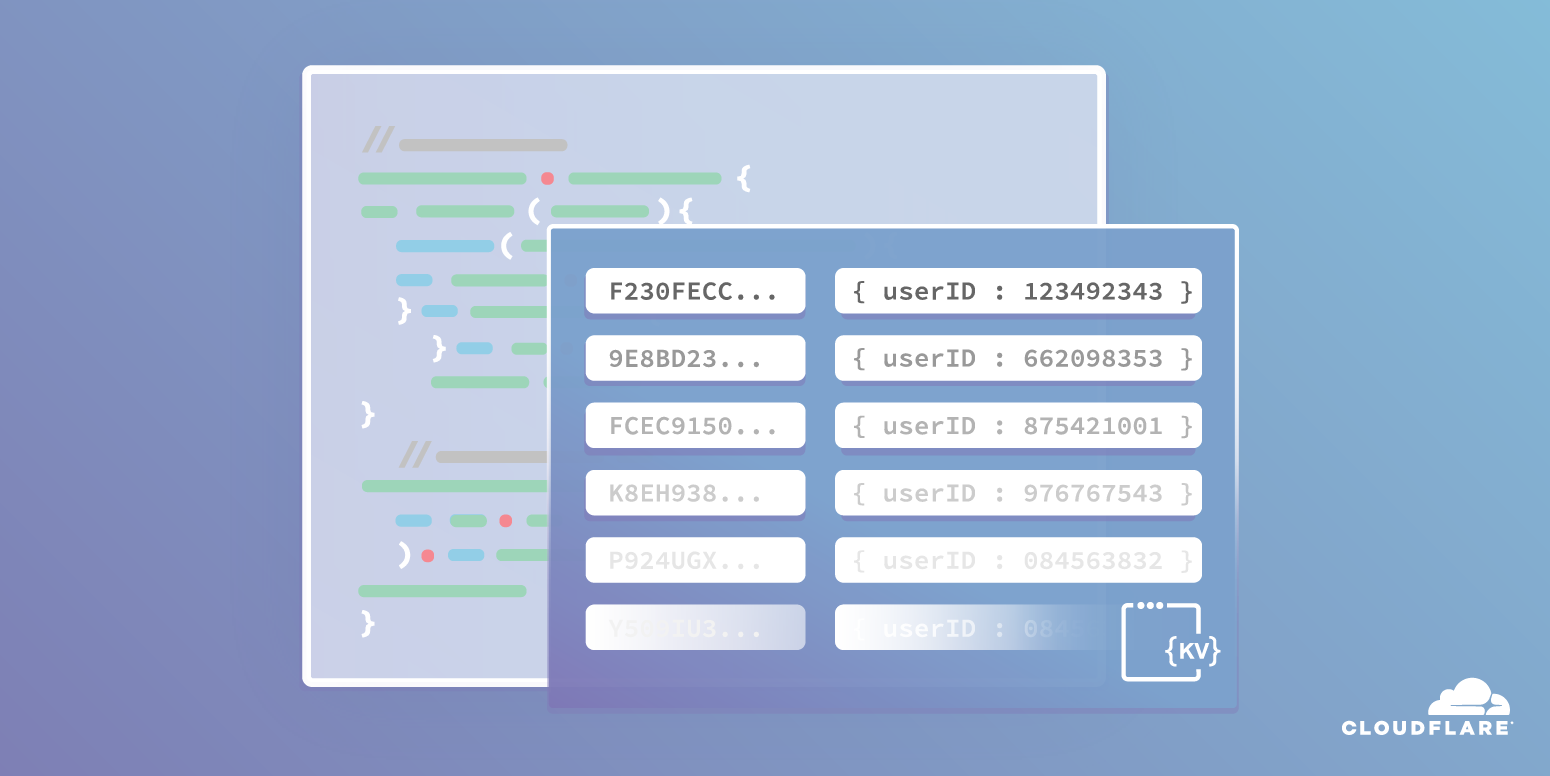
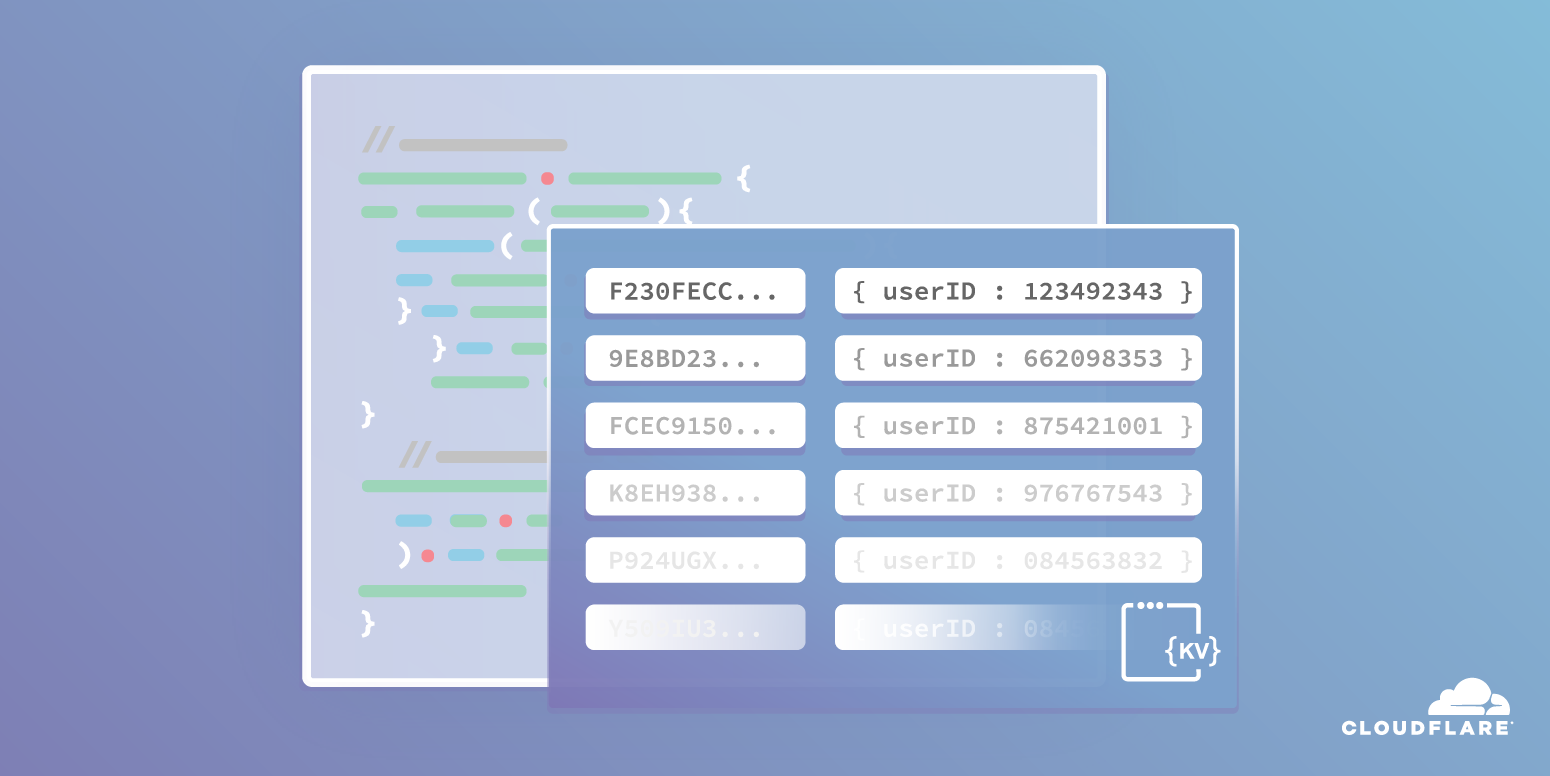
In this tutorial, we’ll build a todo list application in HTML, CSS and JavaScript, with a twist: all the data should be stored inside of the newly-launched Workers KV, and the application itself should be served directly from Cloudflare’s edge network, using Cloudflare Workers.
To start, let’s break this project down into a couple different discrete steps. In particular, it can help to focus on the constraint of working with Workers KV, as handling data is generally the most complex part of building an application:
- Build a todos data structure
- Write the todos into Workers KV
- Retrieve the todos from Workers KV
- Return an HTML page to the client, including the todos (if they exist)
- Allow creation of new todos in the UI
- Allow completion of todos in the UI
- Handle todo updates
This task order is pretty convenient, because it’s almost perfectly split into two parts: first, understanding the Cloudflare/API-level things we need to know about Workers and KV, and second, actually building up a user interface to work with the data.
Understanding Workers
In terms of implementation, a great deal of this project is centered around KV - although that may be the case, it’s useful to break Continue reading
Get ready to write — Workers KV is now in GA!
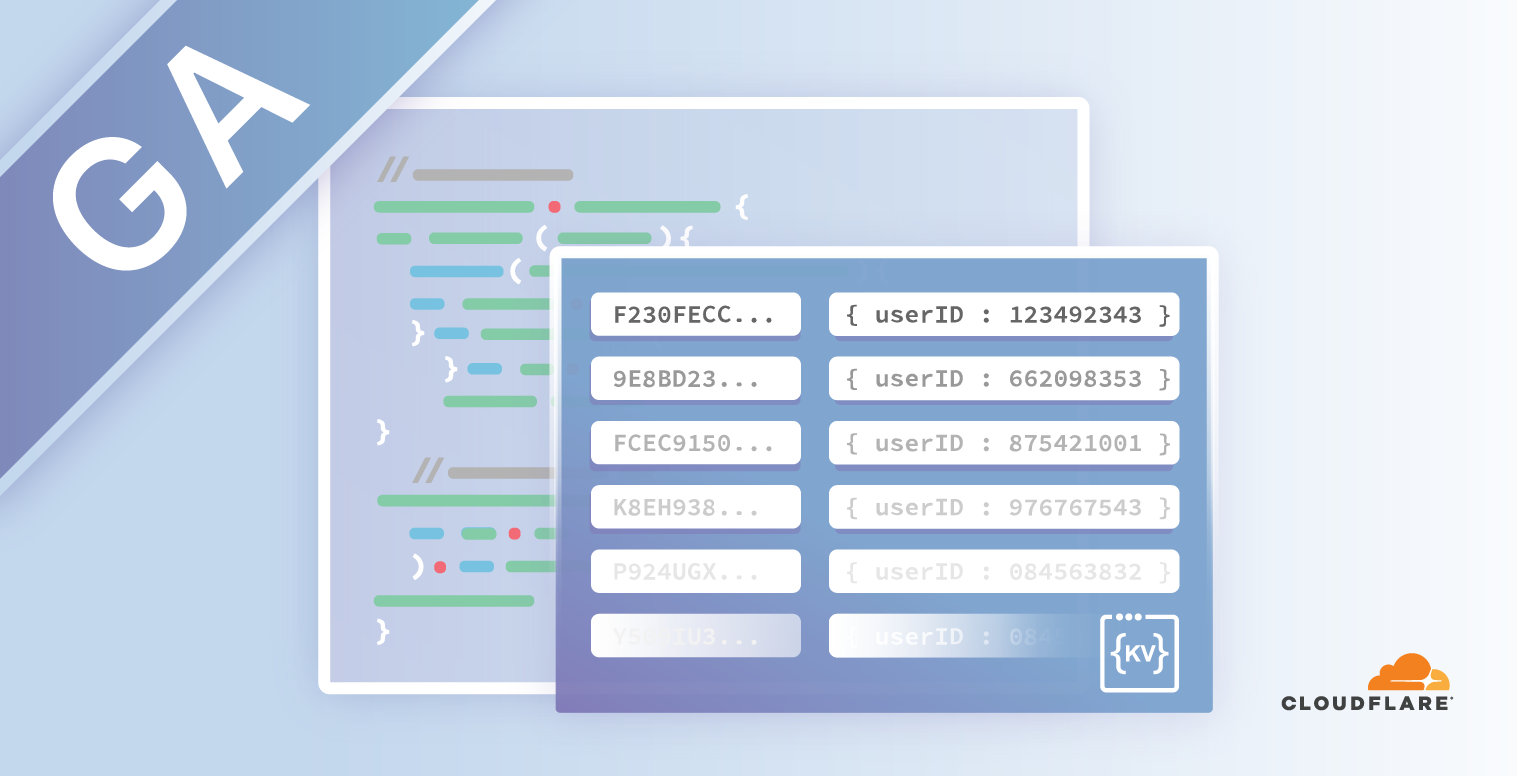
Today, we’re excited to announce Workers KV is entering general availability and is ready for production use!
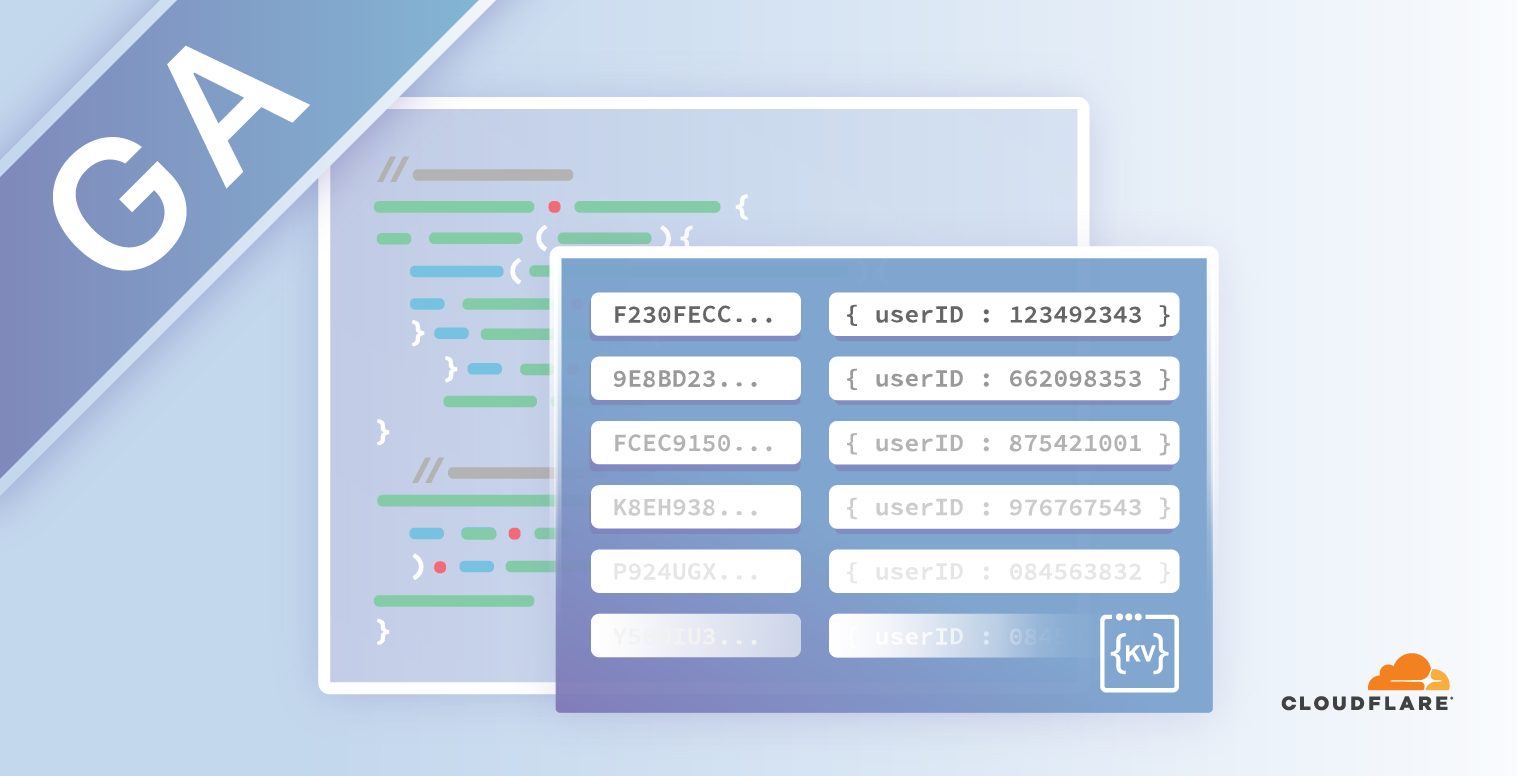
What is Workers KV?
Workers KV is a highly distributed, eventually consistent, key-value store that spans Cloudflare's global edge. It allows you to store billions of key-value pairs and read them with ultra-low latency anywhere in the world. Now you can build entire applications with the performance of a CDN static cache.
Why did we build it?
Workers is a platform that lets you run JavaScript on Cloudflare's global edge of 175+ data centers. With only a few lines of code, you can route HTTP requests, modify responses, or even create new responses without an origin server.
// A Worker that handles a single redirect,
// such a humble beginning...
addEventListener("fetch", event => {
event.respondWith(handleOneRedirect(event.request))
})
async function handleOneRedirect(request) {
let url = new URL(request.url)
let device = request.headers.get("CF-Device-Type")
// If the device is mobile, add a prefix to the hostname.
// (eg. example.com becomes mobile.example.com)
if (device === "mobile") {
url.hostname = "mobile." + url.hostname
return Response.redirect(url, 302)
}
// Otherwise, send request to the original hostname.
return await fetch(request)
Continue reading9 Things to Consider When Estimating Time
Often in my career I have to make an estimate about the so-called “level of effort” (LoE) to do a thing.
- What’s the LoE for me to do a demo for this customer?
- What’s the LoE for me to help respond to this RFP?
- What’s the LoE for me to participate in this conference?
The critical metric by which I usually have to measure the LoE is time. People, equipment, venue, materials, and location are rarely ever a limiting factor. Time is always the limiting factor because no matter the circumstance, you can’t just go and get more of it. The other factors are often elastic and can be obtained.
And oh how I suck at estimating time.
As soon as the question comes up, “What’s the LoE for…”, I immediately start to think, ok, if I am doing the work, I can do this piece and that piece, I can read up on this thing and get it done with slightly more time invested, and then yada, yada, yada… it’s done!
What I don’t account for is the human element. The unexpected. The fact that we’re all different and team members will go about their work in their Continue reading
Data Deduplication in Network Automation Data Models
One of the toughest challenges in the hands-on part of Building Network Automation Solutions online course is the create a data model describing your service exercise.
Networking engineers never had to think about data models describing their networks or services, and the first attempt often results in something that looks like simplified device configuration in YAML or JSON format.
I wrote a long article describing how you can slowly redesign your box-focused data model into a network-focused one. The first parts describing the problem and initial deduplication are already online.
9 Things to Consider When Estimating Time
Often in my career I have to make an estimate about the so-called “level of effort” (LoE) to do a thing.
- What's the LoE for me to do a demo for this customer?
- What's the LoE for me to help respond to this RFP?
- What's the LoE for me to participate in this conference?
The critical metric by which I usually have to measure the LoE is time. People, equipment, venue, materials, and location are rarely ever a limiting factor. Time is always the limiting factor because no matter the circumstance, you can't just go and get more of it. The other factors are often elastic and can be obtained.
And oh how I suck at estimating time.
As soon as the question comes up, “What's the LoE for…", I immediately start to think, ok, if I am doing the work, I can do this piece and that piece, I can read up on this thing and get it done with slightly more time invested, and then yada, yada, yada… it's done!
What I don't account for is the human element. The unexpected. The fact that we're all different and team members will go about their work in their Continue reading
One night in Beijing

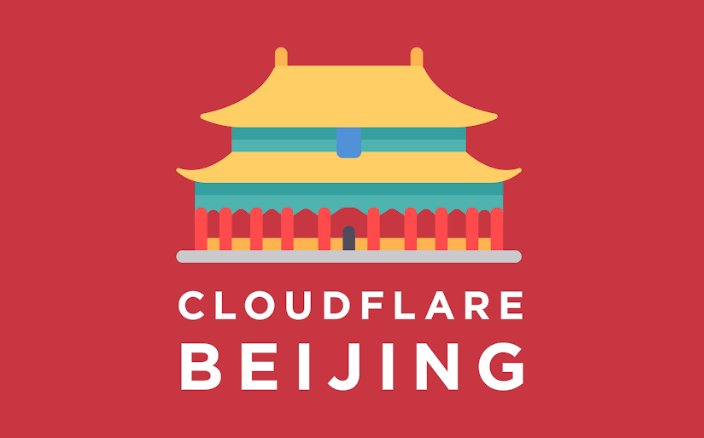
As the old saying goes, good things come in pairs, 好事成双! The month of May marks a double celebration in China for our customers, partners and Cloudflare.
First and Foremost
A Beijing Customer Appreciation Cocktail was held in the heart of Beijing at Yintai Centre Xiu Rooftop Garden Bar on the 10 May 2019, an RSVP event graced by our supportive group of partners and customers.
We have been blessed with almost 10 years of strong growth at Cloudflare - sharing our belief in providing access to internet security and performance to customers of all sizes and industries. This success has been the result of collaboration between our developers, our product team as represented today by our special guest, Jen Taylor, our Global Head of Product, Business Leaders Xavier Cai, Head of China business, and Aliza Knox Head of our APAC Business, James Ball our Head of Solutions Engineers for APAC, most importantly, by the trust and faith that our partners, such as Baidu, and customers have placed in us.
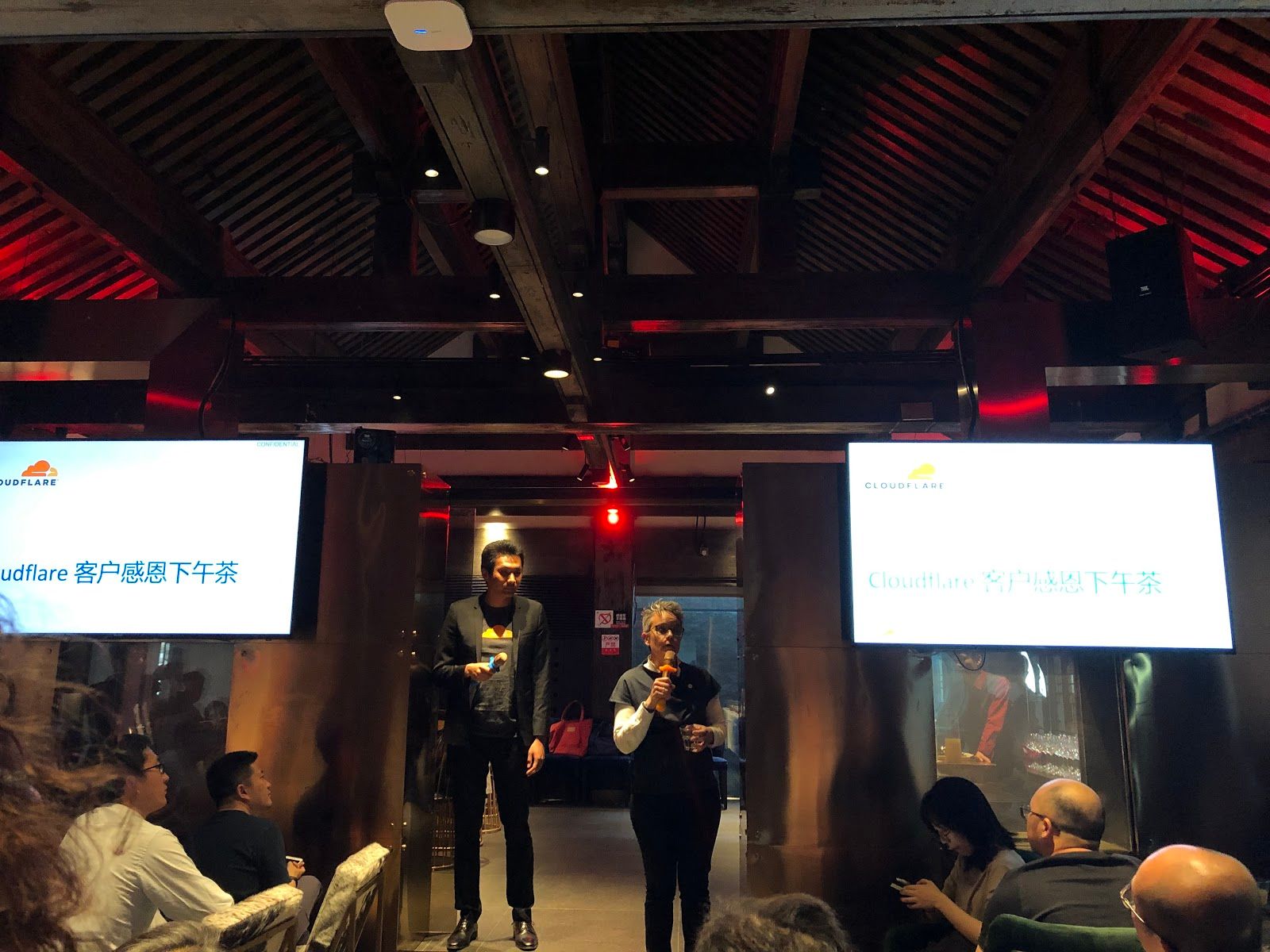
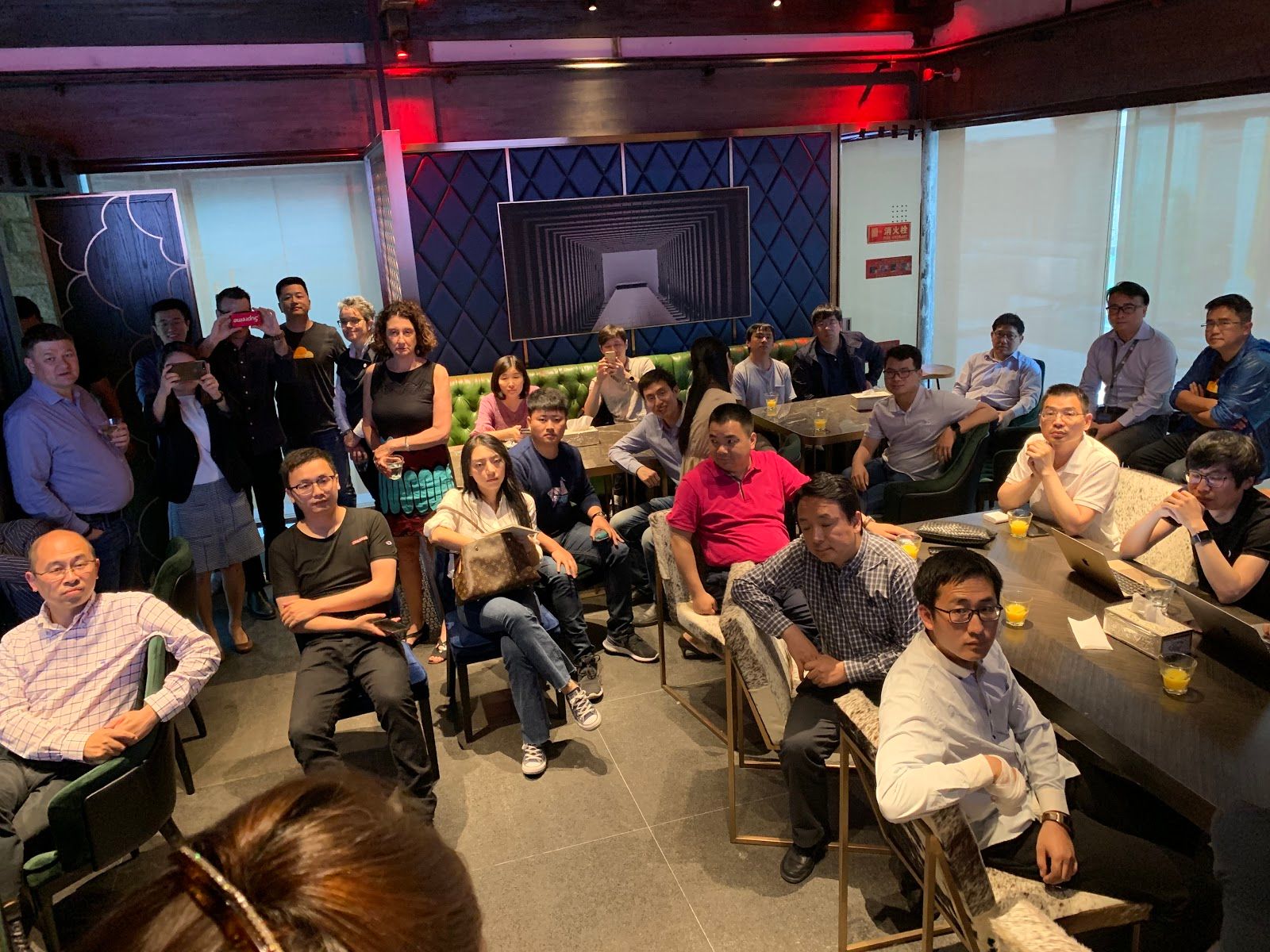
Double Happiness, 双喜

On the same week, we embarked on another exciting journey in China with our grand office opening at WeWork. Beijing team consists of functions from Customer Development Continue reading
Network Break 235: Microsoft Issues Patch For Wormable Vulnerability; Intel Pursued By ZombieLoad
Today's Network Break tackles a string of vulnerabilities from Microsoft, Cisco, and Intel. We also look at a new 400G switch from Arista, an IoT security announcement from Extreme, Cisco financial results, and more tech news.
The post Network Break 235: Microsoft Issues Patch For Wormable Vulnerability; Intel Pursued By ZombieLoad appeared first on Packet Pushers.
Transparency Drives SDxCentral to Discontinue Publishing Analyst Columns and Contributor Content
After careful consideration, SDxCentral has decided it will discontinue publishing third-party...
FCC Chief Backs T-Mobile-Sprint Merger With Concessions
 FCC Chairman Ajit Pai says he backs the $26.5 billion transaction and is encouraging his fellow...
FCC Chairman Ajit Pai says he backs the $26.5 billion transaction and is encouraging his fellow...
Oracle Taps Kubernetes, Service Broker API to Automate Cloud Services
 The platform also allows users to access Oracle’s Generation 2 cloud infrastructure.
The platform also allows users to access Oracle’s Generation 2 cloud infrastructure.
Intel, Google, Other US Tech Companies Ban Huawei Following Trump Blacklist
 Both U.S. companies and Huawei will take revenue hits as a result of the blacklisting.
Both U.S. companies and Huawei will take revenue hits as a result of the blacklisting.
Out and about this week

A reminder to my readers that I will be speaking at Interop19 this week in Las Vegas on Wednesday. Denise Donohue and I are speaking about finding smart people:

I will also be speaking at CHINOG Chicago Illinois on Thursday:
And interacting with some other folks on a panel about getting started in the IETF.
Mellanox Launches Ethernet Cloud Fabric Based on 400G Switches
 “We get asked a lot: ‘Do your switches compare to [Broadcom] Trident or Tomahawk?’ The short...
“We get asked a lot: ‘Do your switches compare to [Broadcom] Trident or Tomahawk?’ The short...
The Week in Internet News: San Francisco Bans Use of Facial Recognition by Police

No cameras, please: The San Francisco Board of Supervisors has voted to ban the use of facial recognition technologies by the policy and other agencies over privacy and civil liberties concerns, the New York Times reports. Even though police across the country have used the technology to identify criminals, facial recognition has raised fears of abuse and of turning the country into a police state.
Broadband in space: SpaceX had planned to launch a rocket containing 60 satellites designed to deliver broadband service, but the company delayed the launch a couple of times, first because of wind and then because the satellites need a software update, ExtremeTech reports. The launch was supposed to be a first step toward Elon Musk’s plan to create a space-based broadband network.
Broadband in drones: As an alternative to satellite broadband and other efforts, SoftBank is looking at ways to provide Internet service by drone, the L.A. Times says. The Japanese telecom carrier recently announced it is working with drone maker AeroVironment to build a drone capable of “flying to the stratosphere, hovering around an area for months and serving as a floating cell tower to beam internet to users on Earth.”
Just Continue reading
VMware to Showcase NSX Service Mesh with Enterprise PKS at KubeCon EMEA
Go Beyond Microservices with NSX Service Mesh
Based on Istio and Envoy, VMware NSX Service Mesh provides discovery, visibility, control, and security of end-to-end transactions for cloud native applications. Announced at KubeCon NA 2018, NSX Service Mesh is currently in private Beta and interested users may sign up here.
The design for NSX Service Mesh extends beyond microservices to include end-users accessing applications, data stores, and sensitive data elements. NSX Service Mesh also introduces federation for containerized applications running on multiple VMware Kubernetes environments, across on-premises and public clouds. This enables improved operations, security, and visibility for containerized applications running on clusters across multiple on-premises and public clouds – with centrally defined and managed configuration, visuals, and policies.
Enterprises can leverage a number of different capabilities including:
- Traffic management
- mTLS encryption
- Application SLO policies and resiliency controls
- Progressive roll outs
- Automated remediation workflows
Achieve Operational Consistency with Federated Service Mesh
At Google Cloud Next, VMware and Google demonstrated how a hybrid cloud solution can use a federated service mesh across Kubernetes clusters on VMware Enterprise PKS and GKE. This highlighted one example deployment for how enterprise teams can achieve consistent operations and security for cloud native applications and data.
To learn Continue reading
One more thing… new Speed Page
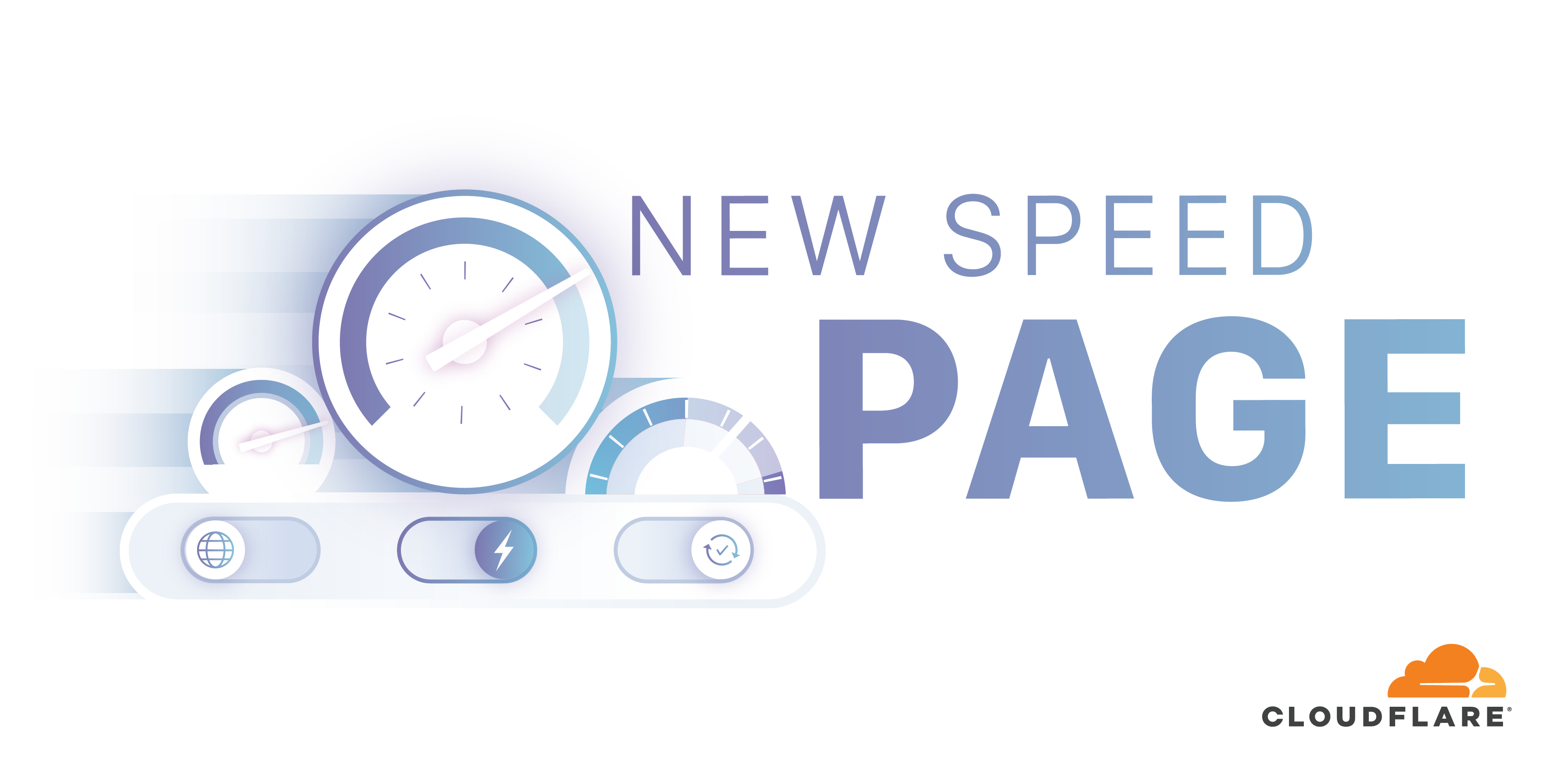
Congratulations on making it through Speed Week. In the last week, Cloudflare has: described how our global network speeds up the Internet, launched a HTTP/2 prioritisation model that will improve web experiences on all browsers, launched an image resizing service which will deliver the optimal image to every device, optimized live video delivery, detailed how to stream progressive images so that they render twice as fast - using the flexibility of our new HTTP/2 prioritisation model and finally, prototyped a new over-the-wire format for JavaScript that could improve application start-up performance especially on mobile devices. As a bonus, we’re also rolling out one more new feature: “TCP Turbo” automatically chooses the TCP settings to further accelerate your website.
As a company, we want to help every one of our customers improve web experiences. The growth of Cloudflare, along with the increase in features, has often made simple questions difficult to answer:
- How fast is my website?
- How should I be thinking about performance features?
- How much faster would the site be if I were to enable a particular feature?
This post will describe the exciting changes we have made to the Speed Page on the Cloudflare dashboard to give Continue reading
Kubernetes and VMware Enterprise PKS Networking & Security Operations with NSX-T Data Center
The focus of this blog is VMware Enterprise PKS and Kubernetes Operations with NSX-T Data Center. For the sake of completion, I will start with a high level NSX-T deployment steps without going too much into the details.
This blog does not focus on NSX-T Architecture and Deployment in Kubernetes or Enterprise PKS environments, but it highlights some of those points as needed.
Deploying NSX-T Data Center
There are multiple steps that are required to be configured in NSX-T before deploying Enterprise PKS. At a high level, here are the initial steps of installing NSX-T:
- Download NSX-T Unified Appliance OVA.
- Deploy NSX-T Manager (Starting from NSX-T 2.4, three managers could be deployed with a Virtual IP).
- Add vCenter as a Compute Manager in NSX-T
- Deploy NSX-T Controllers. (Starting from NSX-T 2.4 the controllers are merged with NSX-T manager in a single appliance)
- Deploy one or more pairs of NSX-T Edges with a minimum of Large Size. (Large Size is required by Enterprise PKS, Bare-Metal Edges could be used too).
- Install NSX Packages on ESXi Hosts
- Create an Overlay and a VLAN Transport Zones.
- Create a TEP IP Pool.
- Add ESXi Hosts as a Transport nodes to the Continue reading
EU election season and securing online democracy

It’s election season in Europe, as European Parliament seats are contested across the European Union by national political parties. With approximately 400 million people eligible to vote, this is one of the biggest democratic exercises in the world - second only to India - and it takes place once every five years.
Over the course of four days, 23-26 May 2019, each of the 28 EU countries will elect a different number of Members of the European Parliament (“MEPs”) roughly mapped to population size and based on a proportional system. The 751 newly elected MEPs (a number which includes the UK’s allocation for the time being) will take their seats in July. These elections are not only important because the European Parliament plays a large role in the EU democratic system, being a co-legislator alongside the European Council, but as the French President Emmanuel Macron has described, these European elections will be decisive for the future of the continent.
Election security: an EU political priority
Political focus on the potential cybersecurity threat to the EU elections has been extremely high, and various EU institutions and agencies have been engaged in a long campaign to drive awareness among EU Member Continue reading